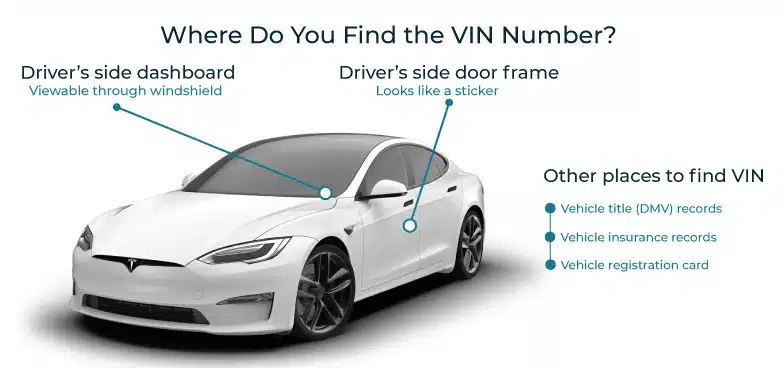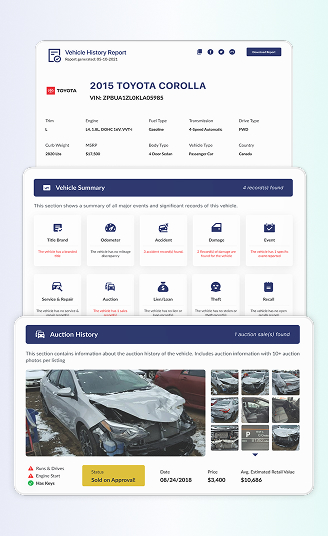
Plymouth Recall Check
Enter your VIN to see if your Plymouth has any open safety recalls. Detailed Vehicle History shows what’s affected, confirms completed repairs, and explains how to book the free dealer fix. Simple steps, clear answers. Protect your car’s safety and value.
What is a Plymouth Recall?
A Plymouth recall is an official safety (or emissions) action tied to a specific defect in a Plymouth vehicle. Even though Plymouth was retired by Chrysler in 2001, recalls still run through the parent company today (Chrysler → FCA US → now Stellantis) and are handled at Mopar/Chrysler-brand dealers. If a defect could cause injury or fails to meet federal standards, U.S. law requires the manufacturer to notify owners and provide a free repair, parts, and labor.
There are two main lanes:
- Safety recalls (NHTSA): When a safety defect or non-compliance exists, NHTSA oversees the campaign, and the automaker supplies a remedy at no charge. You’ll get a notice explaining the risk, affected parts, and how to book the fix. Dealers perform the work, and the manufacturer reports completion rates back to NHTSA.
- Emissions recalls (EPA): Under the Clean Air Act, EPA can require manufacturers to recall and repair vehicles that don’t meet emissions standards in real-world use, again at no cost to the owner.
Because Plymouths are older, there’s one quirk to know: NHTSA’s public VIN tool typically shows safety recalls from the past 15 calendar years. So your Plymouth’s older campaigns may not appear there, even though the underlying recall history still matters for safety, maintenance, and value. That’s why you pair a VIN lookup with dealer verification or a comprehensive history report.
Why You Should Check the Plymouth Recall History?
Running a Plymouth Recall Check is a small investment that can provide significant benefits. Don’t take any chances when it comes to the safety and reliability of a vehicle.
Below are some extra reasons why you should check the Plymouth recall records:
Avoid Unsafe Plymouth
Any vehicle can develop safety problems, and Plymouth is no exception. A quick recall check tells you if your car has any outstanding campaigns that affect safety. If it does, schedule the no-cost fix and keep the service record. It’s a simple step that helps make sure your Plymouth is safe for you and your passengers.
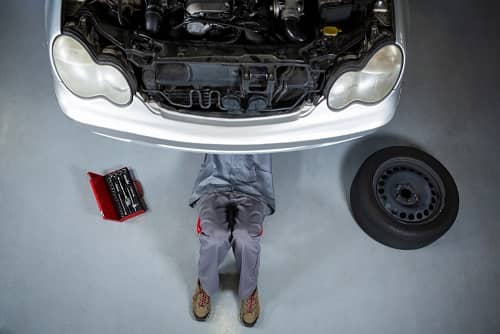
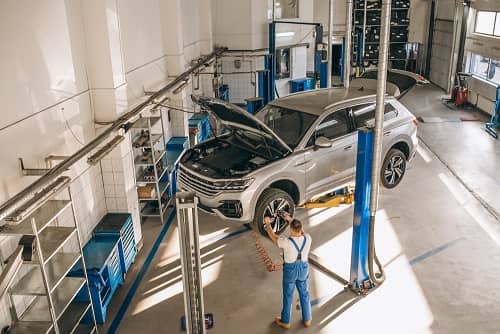
Compliance
Run a recall check before you commit. By law, automakers must alert owners to safety defects and provide free repairs. Confirming your Plymouth’s recall status helps you avoid paperwork problems, supports insurance and financing, and protects resale value. A Plymouth with open recalls may not meet federal safety standards, which can make ownership and future sale more complicated.
Avoid Out-of-Pocket Repair Bills
Run a Plymouth recall check before you buy or sell. Safety defects are fixed free by the manufacturer, which can save you thousands compared to paying for similar repairs yourself. Giving you peace of mind.

How to Run Plymouth Recalls?
Discovering your Plymouth recall report is just a minute away! Follow these easy steps to get the information you need quickly and effortlessly:

Find your Plymouth VIN
You'll need your Vehicle Identification Number (VIN) ready. Look on the driver’s side dashboard (through the windshield) or the driver’s door jamb. You can also find the VIN on your title, registration, or insurance card. Our lookup works for classic Plymouth models.


Enter your details
Type your VIN in the form above. No VIN handy? Use your license plate number instead.


Receive Your Plymouth Recall Report
We’ll show any open Plymouth recalls immediately, plus key details and next steps. If a recall is listed, book the free repair at an authorized Plymouth dealer for peace of mind.
What is on the Plymouth Recall Check?
In your Detailed Vehicle History, the Plymouth recall check lists any safety recalls tied to your vehicle. Each entry shows the announcement date, the affected component, and the recommended next steps.
Explore the details below for more information:
- Date of recalls: Shows when Plymouth and NHTSA issued the recall, helping you judge urgency and confirm our data is timely, accurate, and decision-ready.
- Affected Component: Identifies the exact Plymouth part involved, so you know what’s wrong and can discuss repairs confidently with any dealer or mechanic.
- Remedy: Details the manufacturer’s free fix. You’ll see where to go and what’s covered, reducing hassle and avoiding out-of-pocket surprises.
- Next step for the affected Plymouth: Confirm if your Plymouth is listed under the recall and schedule repairs. With a complete Vehicle Report, you’ll also see past recalls and repair status.
A Plymouth vehicle history report also includes lien/loan records, title brand check, accident records, service and maintenance records, and more. Review the records below:
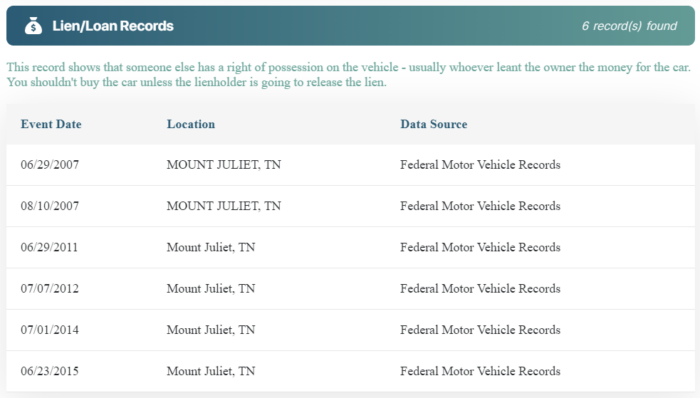
Lien/Loan Records
Confirm no one else has a financial claim before you buy or ship overseas.
Title Brand Check
Flags like salvage, flood, rebuilt, and lemon. These can impact safety, insurability, and price, especially on classic Plymouths where paperwork gets messy.
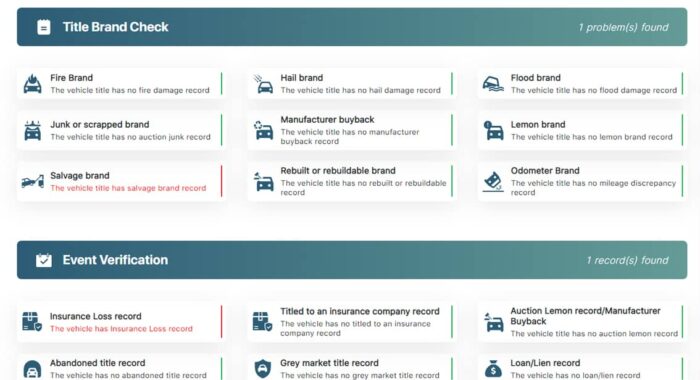

Accident Records & Damage Verification
Crash dates, severity notes, and salvage mentions help you judge structural integrity and value.
Service and Maintenance Records
Oil, brakes, tires, timing belts, and seeing routine care are gold for long-stored Plymouths.


Vehicle Usage Record & Ownership History
Ownership counts, durations, and states. If your Plymouth hopped states or changed hands quickly, you’ll see it and can ask better questions.
Mileage Records
Odometer readings over time to spot rollbacks or gaps, handy for collector-grade Plymouths with low miles.

Common Issues Leading to Plymouth Recall
Plymouth vehicles have faced several recalls due to safety and reliability concerns. Common issues include driver-airbag “clockspring” failure.
When checking for a Plymouth, several factors come into play. Here’s a breakdown of elements that could affect your Plymouth and lead to a recall:
Airbag failure
Driver-airbag “clockspring” failure – minivans (1998–2000 Voyager / Grand Voyager)
- What happens: A broken clockspring in the steering wheel can disable the driver’s airbag (and horn/cruise).
- Risk: The Airbag may not deploy in a frontal crash.
- Recall IDs & dates: NHTSA 04V480000; owner mailings began Oct 12, 2004; ~955,344 vehicles (across Chrysler/Dodge/Plymouth minivans).
- Fix: Dealers replace the clockspring; extended coverage/reimbursement noted in campaign materials.
Airbag control module can deploy unexpectedly — Neon (1997)
- What happens: Faulty ACM logic could trigger the airbag when the ignition is switched off.
- Risk: Sudden deployment, possible injury.
- Recall ID & dates: NHTSA 97V080000; reports received May 16, 1997; owner notices began July 1997; about 125,000 vehicles (multi-brand; includes Plymouth Neon).
- Fix: Replace the airbag control module with a revised unit.
Fuel system defects
Fuel leaks at fuel rail O-rings — minivans with 3.3L/3.8L (2000 Voyager)
- What happens: Sealing O-rings on the fuel rail can degrade and seep.
- Risk: Leak + ignition source = fire risk.
- Recall ID: NHTSA 00V268 (2000 Plymouth Voyager shown).
- Fix: Install a new seal on the fuel rails/crossover to prevent external leakage. (NHTSA schedule not provided in the initial notice.)
Fuel-pump module seal leak — minivans (1996 Voyager / Grand Voyager)
- What happens: Fuel can leak at the tank/fuel-pump module interface.
- Risk: Fire risk if an ignition source is present.
- Recall ID & dates: NHTSA 99V216000; campaign reported Aug 9, 1999; owner mailings Jan 9, 2000; ~635,469 vehicles (multi-brand).
- Fix: Dealers repair the pump module sealing to stop the leak.
Structure & chassis (Prowler frame)
Frame casting heat-treat issue — Prowler (1999–2001)
- What happens: Some aluminum frame castings missed a required heat-treat process and can be too soft.
- Risk: Possible frame fracture leading to loss of control.
- Recall ID & dates: NHTSA 99V313; owner notification expected Dec 1999.
- Fix: Chrysler stated that dealers would replace the vehicles in the affected population.
Child restraint & seat-belt compliance
Child-seat tether instructions missing (FMVSS 225) — Prowler (2000–2001)
- What happens: Owner’s manuals lacked the step-by-step guidance (with diagrams) for attaching a top tether.
- Risk: A child seat might be installed incorrectly, raising injury risk in a crash.
- Recall ID & dates: NHTSA 00V366; owner letters Nov 12, 2000.
- Fix: Mail an owner-manual addendum with the correct instructions.
Integrated child-seat routing / rear belt issues — minivans (1997–1998 Voyager family)
- What happens: On some vans with integrated child seats, shoulder-belt webbing could be routed incorrectly, or trim could interfere with rear outboard belts.
- Risk: Difficult belt operation or improper restraint of a child.
- Recall IDs & dates (examples): 97V231000 (Dec 15, 1997; ~900 units) and 02V076000 (owners mailed June 3, 2002; ~545,311 units across makes).
- Fix: Inspect and correct belt routing; address trim interference so belts function freely.
Understanding the Plymouth Recall Process
NHTSA reviews safety complaints and, when a defect is confirmed, the automaker must issue a recall under NHTSA oversight. You can then check your Plymouth by VIN and get a free remedy at a dealer.
Discover the full breakdown of the Plymouth Recall Process below:
Report the Problem
Notice something unsafe on your Plymouth? File a complaint with NHTSA. Your report is logged, compared across VINs, and helps trigger formal investigations.
Investigation
Once a complaint is submitted, the NHTSA follows a multi-step process to determine whether a recall is necessary.
- Screening: NHTSA’s Office of Defects Investigation reviews patterns in complaints and other data.
- Analysis: Defect petitions are reviewed in detail. If denied, the decision and reasoning are publicly posted in the Federal Register.
- Investigate the Issues: When Plymouth’s safety concerns are confirmed, NHTSA launches a formal investigation, ending in either no defect or a recall.
- Recall Management: NHTSA ensures owners are notified and monitors repair completion rates.
Recalls
A safety recall means the manufacturer must inform owners and correct the problem. Recalls happen when a vehicle or component is unsafe or doesn’t meet regulations. Most are voluntary, and manufacturers are required to repair, replace, refund, or buy back the affected vehicle.
How Plymouth Vehicle Recalls Are Handled?
When a safety problem is found on a Plymouth, three groups work together: the manufacturer, NHTSA, and you, the owner.
This teamwork finds defects, informs drivers, and makes sure fixes are completed to keep your vehicle safe and legal. Below is a detailed breakdown of each role
Automaker Role
Plymouth is discontinued, but the maker’s duty remains. Stellantis now manages Chrysler-family recalls and routes Plymouth VINs through Mopar dealers. When data shows risk, Stellantis files the recall, designs the remedy, supplies parts, trains dealers, and notifies last-known owners (letters/emails) with steps and timing.
Safety-recall repairs are free (regardless of warranty). The company tracks completion and reports to NHTSA. Some campaigns may include extended coverage or reimbursement for earlier owner-paid repairs (with receipts). Owners mainly book the appointment; Stellantis/dealers stock parts and perform the fix. For emissions issues, EPA rules apply, and manufacturers must report and correct those defects as well.
NHTSA’s Role
The NHTSA collects complaints, warranty data, and test results to spot trends and can open defect investigations. If a defect exists, NHTSA oversees the recall, reviews the remedy, requires timely owner notices, monitors completion, and can escalate if progress lags. It runs the free VIN lookup and publishes recall communications so anyone can see what happened and when. The public VIN tool generally shows about the last 15 years; older Plymouth information lives in archived recall documents/letters.
Your Role as the Vehicle Owner
Your job is to check the VIN, read notices, and schedule the free repair quickly. If parts are back-ordered, get on the list and follow interim guidance (e.g., seating limits for airbag issues). After service, save proof (recall ID, date, mileage, dealer invoice) for resale and maintenance records. If you already paid for a repair later covered by a recall, request reimbursement per the recall letter/customer care.
For older Plymouths outside the 15-year display window, gather service records and run a Detailed Vehicle History report to verify past campaigns/completions. If you suspect an uncaptured safety defect, file a complaint with NHTSA to help trigger an investigation.
Get Plymouth Window Sticker by VIN
Get the Plymouth Window Sticker by VIN and see the car as it was built: the trim, engine, factory options, colors, packages, safety equipment, and original MSRP (when available). Use it alongside your recall check to confirm equipment affected by campaigns, verify seller claims, and spot missing features.
One clean label, less guesswork, smarter pricing.

Why Use Detailed Vehicle History to Check Plymouth Recall?
Because we go beyond a simple “open/closed” status. We explain the defect, risk, and remedy in plain English, show announcement and letter dates, and note what to ask the dealer. For classics, we clarify the 15-year free-repair window and why some older campaigns don’t appear in the public VIN lookup. One report, real context, so you can maintain safety and value without guesswork.
Recall Check For Others Manufacturers
FAQ about Plymouth Recalls Check
Which Plymouth models had recalls?
Commonly: Voyager/Grand Voyager (airbag clockspring) and Neon (airbag control module). The Prowler had a structural recall (frame casting) and a child-seat manual addendum. Always verify by VIN.
Is it safe to drive a Plymouth with an open recall?
Depends on the defect. Many are safe to drive to the appointment; some require parking it. Read the notice or ask a dealer.
Do Plymouth recalls expire?
Safety recalls don’t “expire,” but parts availability or campaign administration can change with age. Always call the dealer with your VIN.
What if the NHTSA VIN lookup shows nothing for my Plymouth?
That’s expected for older vehicles because NHTSA’s tool typically covers only the last ~15 years. Use a DVH report and prior owner records to verify older campaigns.
How do emissions recalls affect a Plymouth?
EPA can require emissions-related recalls; some states tie registration/inspection to completing them. Dealers perform these fixes for free.
Will an open Plymouth recall hurt resale value?
Left unfixed, yes (buyers see risk and hassle). Completed recalls with documentation usually protect value by showing responsible upkeep.

